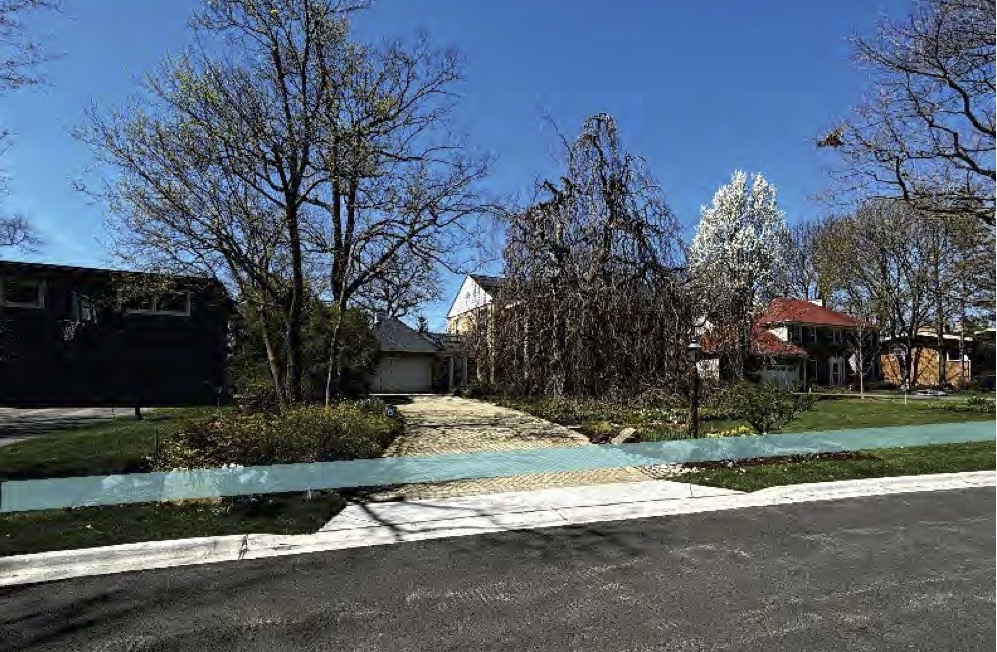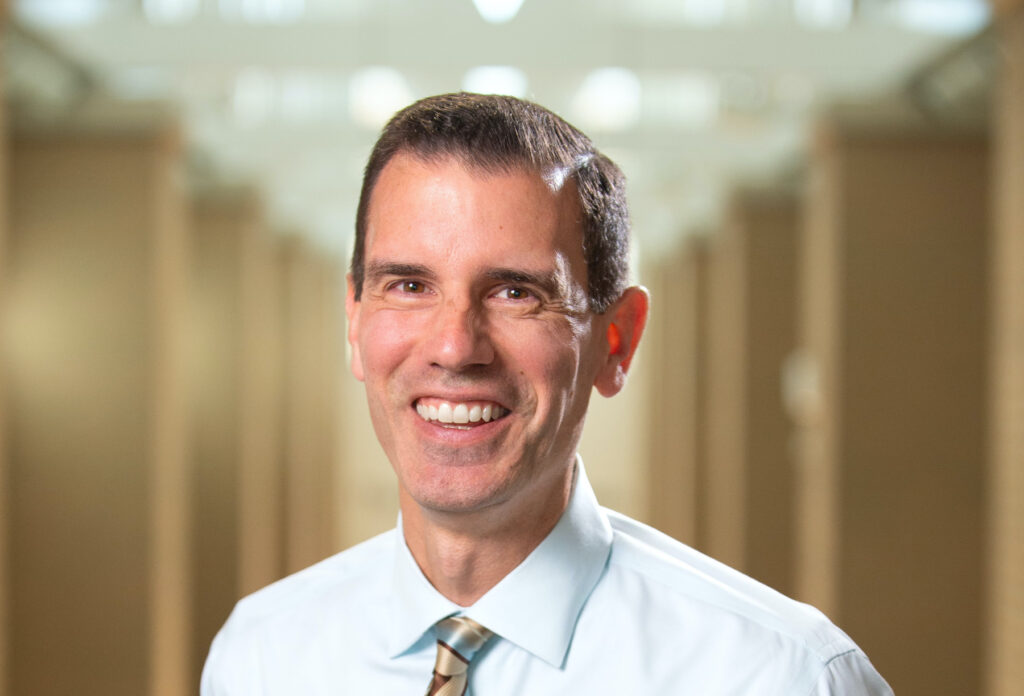
Where the Sidewalk Ends: Highland Park council moves on from contentious University Ave. sidewalk plan
The prospect of installing sidewalks on University Avenue in Highland Park has faced significant opposition, especially from those who live along the street.
But, for now, the issue has been put to rest with a majority of the Highland Park City Council voting on Tuesday against the construction of those sidewalks.
Even before councilmembers began their discussion on Oct. 15, Mayor Nancy Rotering took a minute to address the divisiveness and how the issue reportedly has pitted neighbor against neighbor.
“Obviously this is a very difficult and contentious conversation that we’re having,” she said. “So I’m going to ask your indulgence, because we’re all neighbors, and we’re all going to see each other tomorrow and the weeks after.”
She also asked that members of the audience not react to speakers or make comments, and encouraged a “very civil conversation.”
According to information in the council packet, the sidewalk proposal is a part of the city’s Complete Streets Policy, which includes a commitment to rehabilitating all of Highland Park’s public streets and right-of-ways.
Planning for a sidewalk along University Avenue dates back to 2017, according to the board packet, when they reportedly were requested by a resident. But neighborhood concerns caused the plans to keep changing. They gained traction again in 2023 during road work along University and have been a focus of the city’s Transportation Advisory Group meetings since July.
According to data in the board packet, the plan in front of the council would have included the removal of 15 trees along the north and east sides of University, and 21 along the south and west sides. A speed study, conducted from May 22-29, found that the average vehicle was traveling at 26 mph, and the fastest recorded speed was 50 mph in the 25 mph zone.
A clear majority
Councilmembers thanked those on both sides of the sidewalk debate for sharing their concerns. Many of the elected officials said they had been to University Avenue to see the conditions for themselves.
Ultimately, the council voted 5-2 that now is not the time to install sidewalks along University Avenue.
Most who voted in the majority shared the same concerns, including one stated by Rotering, a self-described “sidewalk lover,” that there are other streets in Highland Park without sidewalks that should be prioritized.
“I feel like we need to take a step back and have a more comprehensive approach to our assessment of sidewalk projects,” she said. “A lot of the projects we’ve done thus far have been on major arteries (such as Green Bay Road).”
But Rotering also added that she understands the concerns the pro-sidewalk crowd has voiced.
“That’s not to say that I’m diminishing the concerns of people on University who have been raising the public safety concerns,” Rotering said. “But I feel like, as a fiscally responsible community, we need to put our resources where there’s the greatest risk.”
Councilmember Barisa Bruckman, a parent of young children who lives on a street without sidewalks, said she can relate to the proponents.
“Public safety is the utmost importance to me, but we must carefully evaluate all available options and balance those solutions with fiscal responsibility and the preservation of our community’s character,” she said, adding that the proposed tree removal would “alter the very nature of the neighborhood.”
Bruckman’s suggestions included traffic calming measures such as speed bumps and stop signs.
Councilmember Andrés Tapia stressed the importance of getting an undisputed majority of University Avenue residents on board with any change. Without that agreement, he said he did not support moving forward.
“How do you bring about change in a community where there’s not a clear-cut agreement on what to do?” he asked. “Change management theory says that when you’re going to do a big change in the community you need a supermajority to agree to it.”
Councilmembers Kim Stone and Anthony Blumberg supported the sidewalks.
Stone said the neighborhood was built prior to modern issues such as drivers with cellphones and frequent delivery vehicles.
“I understand that streets in the Highlands (neighborhood) primarily don’t have sidewalks, but we have to start somewhere,” she said. “The proposed sidewalk on University would have helped build out the sidewalk network in this neighborhood, enabling people to walk comfortably … and would allow children to walk to schools which are just a few blocks away.”
Blumberg said he found himself siding more with the residents concerned about public safety.
“The content of what is said — even if it’s only said by one person — tends, sometimes, to carry a lot of weight for me, and in this circumstance, that is true,” he said.
Residents have their say
Two dozen Highland Park residents spoke during public comment, which lasted about an hour. Most of the speakers agreed with the council’s decision.
University Avenue resident Leticia Lee, who said she’s a pregnant mother of two and cares about keeping children safe, does not believe adding a sidewalk is the answer.
“Sacrificing our trees and the natural environment which we cherish seems a little too high of a price for me, for a problem that can be addressed in other different ways,” she said, adding that she believes removing trees will lead to increased driver speeds.
Mark Portman said the rejected policy was a bad one because of how divisive it is.
“I believe that any policy which creates winners and losers is a bad policy,” he said. “I believe that any policy which results in the inevitable clash between neighbors is a bad policy. And if a policy proposes to give something to certain residents while taking something away from other residents (is a) bad policy.”
Six spoke in support of the sidewalks, including Ellie Goldsmith, a college student who grew up on University Avenue. She said sidewalks are “long overdue.”
“I had so many close calls while walking to the park to play tennis or going to school at Wayne Thomas (Elementary School),” Goldsmith said, later adding, “The street is dangerous and it is time that we get sidewalks before someone gets killed.”
University Avenue resident Jorie Houlihan said she walks her dog in Lake Forest because of how concerned she is walking on University.
“I’m just really disappointed because I feel like the safety of kids in particular is coming second to trees,” she said. “And I love trees and I love that the city takes trees as seriously as they do. But things change.”
Rotering ended the meeting by again asking neighbors to be civil to each other, regardless of their views, and to “love each other (and) be kind to each other.”
The Record is a nonprofit, nonpartisan community newsroom that relies on reader support to fuel its independent local journalism.
Become a member of The Record to fund responsible news coverage for your community.
Already a member? You can make a tax-deductible donation at any time.

Peter Kaspari
Peter Kaspari is a blogger and a freelance reporter. A 10-year veteran of journalism, he has written for newspapers in both Iowa and Illinois, including spending multiple years covering crime and courts. Most recently, he served as the editor for The Lake Forest Leader. Peter is also a longtime resident of Wilmette and New Trier High School alumnus.


